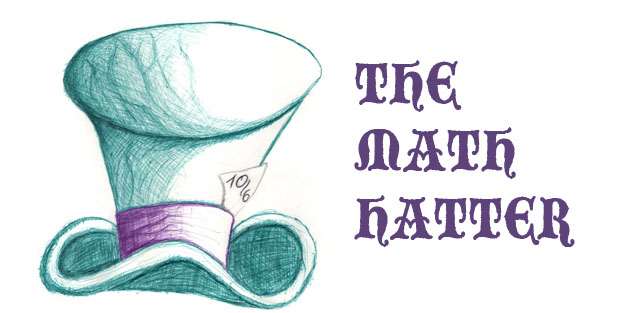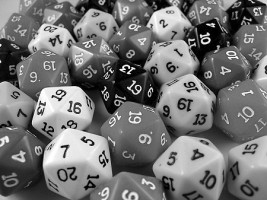A few weeks ago, on January 5, I celebrated the 34th anniversary of the death of Charles Mingus. The American composer, who over the years has become my favorite musician, was an unusual man and something unusual happened on the day he died. After he was diagnosed with Lou Gehrig’s disease in 1977, Mingus moved to Cuernavaca, about 50 miles south of Mexico City, hoping to get a cure from the hands of a renowned healer. Sadly, he died a few months later on January 5, 1979. He was 56 years old and, according to a local newspaper, on the same day, 56 whales beached themselves on the Mexican pacific coast near Acapulco!
Charles Mingus.
Now… I know what you’re thinking: “Does he want us to believe that a bunch of jazz loving mammals committed suicide as a tribute to a true genius? Is this what this article is about? For crying out loud, this is obviously only a coincidence!” I hear you. No need to be so loud. A coincidence, according to the O.A.D., is “a remarkable concurrence of events or circumstances without apparent causal connection.” Well, imagine a young Cro-Magnon, assigned to fire duty and who starts chopping down trees to gather wood. He then ties the logs in neat bundles to be carried on his back and, in so doing, notices that the length of a piece of rope which goes once around a tree is also a little bit more than three times the width of the same tree. He hurries back to the family cave and tells his father, “Dad! Guess what I just discovered? The circumference of a tree, big or small, is always a bit more than three times its diameter.” To which his father answers, “Son, I know there are many things we don’t know about the universe but…for crying out loud this is obviously only a coincidence! Now go wash your hands, there’s mammoth’s pie for dinner.”
Issue of probability
Of course, we know now that there is a causal connection between the circumference of any circle and its diameter. It’s called π. And I am ready to admit that Mingus’ passing didn’t cause the poor whales to die on the beach (or vice versa). Still, I think there are different ways to look at this situation.
The first one, noblesse oblige, is to focus on the mathematical aspect. What makes most coincidences “remarkable” is their low probability of occurrence. When, as a kid, I bumped into my history teacher while on vacation 500 miles from home, it was a remarkable event. But that doesn’t mean it was unlikely to happen. The truth is that every other day and every other summer I didn’t stop and write in my journal, “Today, I didn’t meet Ms. M.” There were plenty of those days. Coincidences sometimes appear as such because we single them out from an ocean of unnoticed events which have the same chance of occurring. We don’t pay attention to non-coincidences. In the words of Plutarch, “It is no great wonder if in a long process of time, while fortune takes her course hither or thither, numerous coincidences should spontaneously occur.” It is just a matter of statistics. Furthermore, it didn’t have to be Ms. M. Had it been any other teacher (or a neighbor, a school friend), I would have marked it as a remarkable event. So the odds were even higher.
Farfetchedness
Of course, the death of 56 whales is a fact remarkable enough for a local newspaper to mention it. But it happens. And if 57 had died then I’m sure people would say Mingus died in his 57th year. What about 22 whales? Well 22 is a very good number for Mingus. He was born on April 22, 1922. And he died on 1.5.79 and 1+5+7+9 = 22. I believe that almost any number could be in some way connected to him with a variable degree of farfetchedness (yes, that is a word). The fact that it was the number 56 was indeed improbable, but the fact that it was an “interesting” number was not.
There is another problem with coincidences, which is even more interesting, albeit less obvious. Sometimes events appear to be coincidences just because people underestimate the odds. I say “people” as a way to exclude myself because, as a trained probabilist, I’ve learned not to trust my intuition when it comes to evaluating odds. Let’s take an example to see how good yours is.
A special year
It’s September, and as I welcome my first class of the year, I check the roster to do the attendance and notice that one student’s date of birth is the same as mine, January 30. What a coincidence! This will surely be a special year. Well let’s try and go into the details. As is often the case, it is actually easier to calculate the probability that the event will NOT happen. Let’s assume there are 18 students in the class, and none of them was born on February 29. It means that for each student, there are 364 possible ways not to be born on January 30. Thus the probability for each one is 364/365. And the probability that not one of them shares my birthday is (364/365)^18. Yes, probabilities need to be multiplied here. If you flip a coin twice, the probability of losing twice is 1/4 as in 1/2 times 1/2.
That number (364/365)^18 is about 0.9518 and that means that there is more than 95% chance that it shouldn’t happen. So it would indeed be a big coincidence, once every twenty school years.
But wait a minute. You’re thinking, “I understood what you did right there, but let’s be honest. If you’d found a student sharing a birthday not just in your first class but in any of your classes, you would still have claimed it a coincidence, right?” Yes, I would, and rightly so. This year I have 86 students so the probability that none of them shares my birthday becomes (364/365)^86 which is about 0.7898. So the odds were still almost 1 against 4 for one of my students to share a birthday with me this year. But I guess you wouldn’t call it a big coincidence. Actually, it would take exactly 253 students for the probability to cross the 50/50 threshold. And of course you can’t call a 50/50 situation a coincidence. Actually, some of you might even think, “But of course one of them has your birthday, 253 students makes for a big group.” This is misleading, it should happen every other year only.
How many students are born the same day?
Okay, now that you’ve been acquainted with some calculations around probabilities, you’re ready to test your intuition with this new situation. Forget about January 30. It is actually a fact this year that none of the 86 were born on the day I was. Consider this. There are 24 students in my class of 6e4 and two of them were born on the same day. Incredible, right? Only 24 students, 365 possible dates and I just found a couple with the same birthday. How many chances were there for this to happen? What do you say? 20%?10%?1%?
Let’s see how this one goes. Again let’s try and calculate the probability for this not to happen, that is, to be precise, the probability that all 24 students were born on a different day. We’ll do that by trying to assign a different date to each student, one by one. First student: 365 remaining dates among 365 that’s 365/365. Second student: 364/365 as one date is already taken. Third: 363/365. Fourth: 362/365… etc down to student number 24: 342/365. (And yes not 341 because, remember, from 365 to 342 there are 24 numbers.)
“Chance is only the measure of our ignorance”
Again let’s multiply all these probabilities: (365/365)*(364/365)*(363/365)*…*(343/365)*(342/365).
French Mathematician Henri Poincaré
That number is about 0.49. There are actually more chances (51% against 49%) for two persons in a group of 24 to share a birthday. So I shouldn’t be surprised if that happens once every two years. And in a group of 50 persons this probability is about 97%! As the French polymath Henri Poincaré once said, “Chance is only the measure of our ignorance.”
But, it is possible that math doesn’t tell the whole story here. There may be another way to look at the situation. In the 1920’s the Swiss psychologist Carl Jung formulated his theory of Synchronicity, the experience of two events that have no apparent causal relation but whose association in time has a special meaning for the person observing them.
Theory of Seriality and Well-being
In other words, the laws of probability being put aside, some events can leave a deep impression on some persons, on an individual level. Jung’s theory was actually inspired by the work of Paul Kammerer, an Austrian biologist who believed that events which appear as coincidences are actually connected by unknown forces which obey a law of series. In 1919 Kammerer published a list of 100 “coincidences” and formulated his theory of Seriality.
I didn’t read this book but I don’t need to as I have already experienced synchronicity. And I’m sure you have, too. I like these experiences, as they can brighten my day with good feelings, but I’m not sure there’s more to it than that.
About the Author :
Originally from Brittany, David Soquet graduated from the Université de Rennes, before becoming a math teacher. After honing his skills at a middle school near Paris, he joined the Lycée Français in 2008. He is the father of two children and is passionate about the history of science. In his teaching, he tries to balance the rigor required by mathematics with humor and discovery. He is very curious and his interests range from modular origami and norse mythology to Fritz Lang’s cinema and music.






